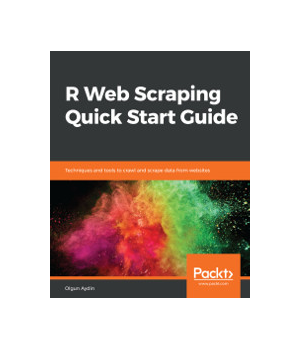- Social Media Scraping: Web scraping is used to collect data from Social Media websites such as Twitter to find out what’s trending. Research and Development: Web scraping is used to collect a large set of data (Statistics, General Information, Temperature, etc.) from websites, which are analyzed and used to carry out Surveys or for R&D.
- 2) Octoparse Octoparse is a web scraping tool easy to use for both coders and non-coders and popular for eCommerce data scraping. It can scrape web data at a large scale (up to millions) and store it in structured files like Excel, CSV, JSON for download.
- Aug 02, 2017 Reading the web page into R. To read the web page into R, we can use the rvest package, made by the R guru Hadley Wickham. This package is inspired by libraries like Beautiful Soup, to make it easy to scrape data from html web pages. The first important function to use is readhtml, which returns an XML document that contains all the.
Web scraping refers to extracting data elements from webpages. I adapted this little tutorial from a blog post I came across on R bloggers. The poster apparently prefers anonymity. The example uses the XML package, but there are other packages like RCurl and scrapeR with additional or different capabilities.

1.2 Web Scraping Can Be Ugly
Depending on what web sites you want to scrape the process can be involved and quite tedious. Many websites are very much aware that people are scraping so they offer Application Programming Interfaces (APIs) to make requests for information easier for the user and easier for the server administrators to control access. Most times the user must apply for a “key” to gain access.
For premium sites, the key costs money. Some sites like Google and Wunderground (a popular weather site) allow some number of free accesses before they start charging you. Even so the results are typically returned in XML or JSON which then requires you to parse the result to get the information you want. In the best situation there is an R package that will wrap in the parsing and will return lists or data frames.
Here is a summary:

First. Always try to find an R package that will access a site (e.g. New York Times, Wunderground, PubMed). These packages (e.g. omdbapi, easyPubMed, RBitCoin, rtimes) provide a programmatic search interface and return data frames with little to no effort on your part.
If no package exists then hopefully there is an API that allows you to query the website and get results back in JSON or XML. I prefer JSON because it’s “easier” and the packages for parsing JSON return lists which are native data structures to R. So you can easily turn results into data frames. You will ususally use the rvest package in conjunction with XML, and the RSJONIO packages.
If the Web site doesn’t have an API then you will need to scrape text. This isn’t hard but it is tedious. You will need to use rvest to parse HMTL elements. If you want to parse mutliple pages then you will need to use rvest to move to the other pages and possibly fill out forms. If there is a lot of Javascript then you might need to use RSelenium to programmatically manage the web page.
rvest is new package that makes it easy to scrape (or harvest) data from html web pages, inspired by libraries like beautiful soup. It is designed to work with magrittr so that you can express complex operations as elegant pipelines composed of simple, easily understood pieces. Install it with:
rvest in action
To see rvest in action, imagine we’d like to scrape some information about The Lego Movie from IMDB. We start by downloading and parsing the file with html():
To extract the rating, we start with selectorgadget to figure out which css selector matches the data we want: strong span. (If you haven’t heard of selectorgadget, make sure to read vignette('selectorgadget') - it’s the easiest way to determine which selector extracts the data that you’re interested in.) We use html_node() to find the first node that matches that selector, extract its contents with html_text(), and convert it to numeric with as.numeric():
R Web Scraping Book
We use a similar process to extract the cast, using html_nodes() to find all nodes that match the selector:
The titles and authors of recent message board postings are stored in a the third table on the page. We can use html_node() and [[ to find it, then coerce it to a data frame with html_table():
Automated Web Scraping Tool
Other important functions
If you prefer, you can use xpath selectors instead of css:
html_nodes(doc, xpath = '//table//td')).Extract the tag names with
html_tag(), text withhtml_text(), a single attribute withhtml_attr()or all attributes withhtml_attrs().Detect and repair text encoding problems with
guess_encoding()andrepair_encoding().Navigate around a website as if you’re in a browser with
html_session(),jump_to(),follow_link(),back(), andforward(). Extract, modify and submit forms withhtml_form(),set_values()andsubmit_form(). (This is still a work in progress, so I’d love your feedback.)
R Web Scraping
To see these functions in action, check out package demos with demo(package = 'rvest').
